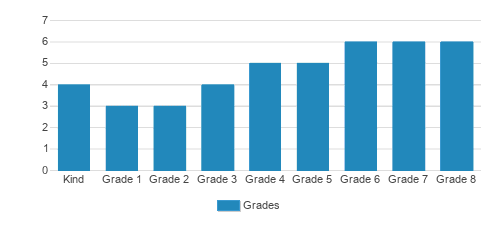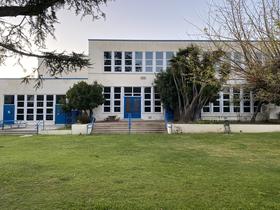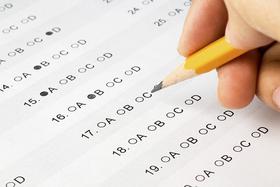At Red Cedar students develop a love of learning within a community that values mutual respect and honors the voice of each individual.
We support Intellectual curiosity, critical thinking and communication skills through an interactive curriculum that emphasizes authentic and rigorous learning.
We nurture the growth of personal and social responsibility, and students grow to become active citizens of the local and world community.
Our curriculum is meaning based, responsive, interactive and vigorous. Our small classes emphasize inquiry, reflection, discussion, reading, writing and experiential learning.
Explorations in the arts, our outdoor classroom, field and travel study, wilderness trips, guest speakers and workshops augment classroom learning.
Quick Stats (2024-25)
- Top Ranked VT School
- Grades: Kindergarten-8
- Enrollment: 46 students
- Yearly Tuition: $10,500
- Acceptance rate: 80%
- Average class size: 10 students
- Application Deadline: Mar. 15 / rolling
- Source: Verified school update
Top Rankings
The Red Cedar School ranks among the top 20% of private schools in Vermont for:
Category
Attribute
Advanced Degrees
School Overview
Religious Affiliation
Grades Offered
Grades Kindergarten-8
Learning Difference Programs
Yes
Year Founded
1989
School Calendar
Student Body
Total Students
46 students
Student Body Type
Co-ed
% Students of Color
4%
State avg.: 13%
Students by Grade

Academics and Faculty
Total Classroom Teachers
5 teachers
Student : Teacher Ratio
9:1
National avg.: 13:1
% Faculty w/Advanced Degree
80%
Average Class Size
10 students
List of Courses Offered
Tuition and Acceptance Rate
Admission Deadline
Mar. 15 / rolling
Yearly Tuition Cost
$10,500
Tuition Notes
K - 6: $10,500
7 & 8: $11,183
% on Financial Aid
30%
Acceptance Rate
80%
National avg.: 85%
Admissions Director
Jacquie Werner-Gavrin
School Notes
- Red Cedar's culture of authentic and rigorous learning engages the minds of students. High expectations and structure foster academic habits. Support for personal initiative and investment nurtures the growth of independence. Students are prepared for college and for lives of active learning.
- Essential skills of life-long learners, most importantly critical thinking and communication, are emphasized throughout the curriculum. Students are encouraged to care about ideas, ask important questions, gather information, and consider deliberatively. Students regularly engage in scientific investigation, and in problem solving. Writing is an integral focus throughout a student's years in the school. The reading of literature is valued across the curriculum. Lively discussion is a hallmark of many classes. Students share and present their work orally and publish their writing. Experiences in the visual arts, music, drama, design and building are interwoven throughout the curriculum. Students study Spanish at all levels.
- Hands-on projects and learning in the field motivate students by providing genuine and meaningful opportunities to integrate and apply skills of research, critical thinking and communication. Examples of such projects include forming a farm-market business that grows and sells garlic; researching the relationship between humans and the landscape in the local community through interviews and site studies, and presenting findings at the Vermont Folklife Center; participating in the Cornell Feeder Watch program through banding and observing birds; developing and performing a play based on a piece of literature; and building a staircase while studying the Pythagorean theory.
- Classes are small, with an average size of ten. Teachers work closely with students to understand, engage and challenge each of them. Every student receives a significant amount of personal attention, and each student's individual learning style is honored.
- Multi-age groupings with a span of about three years form the make-up of most classes. Students work together within these groups on shared themes and activities, with each individual working at a personally challenging level and pace. Classes such as math and word study are focused directly at a particular level. Each group within the school has a home base with a core teacher.
- Red Cedar offers a personal community in which everyone feels a sense of belonging and experiences mutual respect. This community provides a safe base from which an open interest in learning can develop, and in which students can acquire the important social skills that will be needed in all areas of their lives. Each group starts the day with a morning meeting that focuses on community building and social learning. Older students are given leadership training and are supported in their roles as mentors to younger students. The entire K-8 student body gathers together regularly for all-school activities such as older-younger partners, a hike, or work on a community project such as the building of the cob oven. Teachers are closely involved in all aspects of the school and provide modeling and guidance in social interactions throughout the day.
- Red Cedar supports the voice of students as they learn who they are, develop confidence and personal initiative, and become active members of the community, in preparation for becoming active citizens of the local and the global community. Students' ideas, questions, choices and feedback are encouraged in our small and interactive classes. Students are counted on to contribute to the life of the community, and to speak up and help solve problems when they arise. Teachers work to ensure that each student's voice is heard.
- Red Cedar chooses to encompass grades K through 8 because of the richness a mix of ages can bring to a community. Responsibility to the group and for each other is naturally valued. Cooperation and collaboration are emphasized rather than competition. Individuals, and their unique characteristics, strengths, challenges and aspirations, are valued rather than single age standards. Older students provide inspiration and encouragement to younger ones. Students are empowered as learners because they can see the continuum of where they've come from and where they're going.
Source: Verified school update
Frequently Asked Questions
How much does The Red Cedar School cost?
The Red Cedar School's tuition is approximately $10,500 for private students.
What is the acceptance rate of The Red Cedar School?
The acceptance rate of The Red Cedar School is 80%, which is lower than the national average of 82%.
What is The Red Cedar School's ranking?
The Red Cedar School ranks among the top 20% of private schools in Vermont for: Highest percentage of faculty with advanced degrees.
When is the application deadline for The Red Cedar School?
The application deadline for The Red Cedar School is Mar. 15 / rolling (applications are due on Mar. 15 but additional applications are reviewed year-round as space permits ).
School Reviews
Endorse The Red Cedar School. Endorsements should be a few sentences in length. Please include any comments on:
- Quality of academic programs, teachers, and facilities
- Availability of music, art, sports and other extracurricular activities
- Academic or athletic awards
Recent Articles

Inside DoDEA Schools: Qualifications, Costs, and Accreditation
Explore the world of Department of Defense Schools (DoDEA), offering quality education to military families globally. Learn about their history, academic performance, teacher qualifications, and unique benefits for service members' children.

September 23, 2024
Overcoming the Tech DivideThis comprehensive guide offers insights and strategies for educators, administrators, and policymakers to bridge the technology gap in education, ensuring that all students have access to high-quality, tech-enabled learning experiences.

September 05, 2024
AI for Teachers: An IntroductionWe provide practical steps for identifying and implementing AI tools that address specific classroom needs, focusing on solutions that save valuable prep time and are easy to learn. From widely adopted platforms to education-specific applications, discover how AI can enhance your teaching efficiency without overwhelming your schedule.






